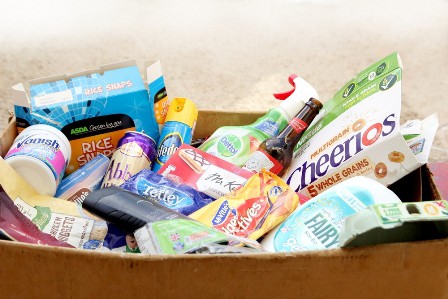OPINION: Angus Macpherson, managing director of the Environment Exchange, looks at what is ahead for the Packing Recovery Note (PRN) market in the new year.
As the 2019 compliance year draws to a close, it is worth considering not only the traumas of this year but also what the Packing Recovery Note (PRN) has achieved.
The PRN has been blamed for all the problems in recycling and yet concurrently Producer Responsibility, the source of the PRN, is being held up to be the solution for all these problems.
In some corners arguments are raging for wholesale change. Meanwhile the PRN has successfully carried on doing its job in providing compliance for the United Kingdom (UK) with its packaging producer responsibility obligations.
Something that is not being achieved in any of the other producer responsibility regimes in the UK: waste electrical equipment; end of life vehicles or batteries.
How does it do that? By providing ring-fenced funds direct from the producer to the recycling industry to encourage it to improve its performance. These funds then cascade down to the point where they are required. The PRN system treats all collectors equally, without discrimination between the private and public sectors. As a market based system the funds increase or decrease according to the supply and demand for this evidence.
As the price increases so it encourages new entrants to enter and old entrants to increase their volume or overcome the barriers that are preventing them from doing so, as the volume increases, compliance is achieved and so the price decreases. As a system it is effective at raising funds, achieving targets and increasing recycling rates, it has coped with fluctuating exchange and freight rates and global trade wars and it is understood by the participants.
As the funds involved have increased so the payers have become concerned about how they are being used and those that perceive they are not receiving the benefit are expressing distress. Does this mean the system is not working? No. All are now focused on trying to optimising packaging performance. Plastic in particular.
Could it be improved? Undoubtedly. Does it require wholesale changes? No. A PRN is evidence that packaging has been received by a reprocessor (aluminium, glass, paper, plastic, steel or wood mill) in the United Kingdom, a PERN is evidence that it has been accepted by an overseas mill that operates at broadly equivalent standards to those in the UK. PRNs and PERNs from a compliance perspective are interchangeable and are normally referred to collectively as PRNs.
Those who issue PRNs are accredited by the Environment Agency, or its equivalent in Northern Ireland, Scotland and Wales. As part of that accreditation process those accredited confirm to the Environment Agency that they comply with all Environmental legislation, including transfrontier shipment of waste. The more effectively these laws are regulated both in the UK and elsewhere the less risk there is to human health and the environment. This is not to suggest that overseas operators are not working to broadly equivalent standards to the UK, in many cases their equipment and processes are far more up to date than domestic ones. It is a reasonable question to ask why mills do not wish to set up in the UK but it is incorrect to blame the PRN for this ailment.
So is theory being borne out. Look at 2019. As the year opened many were feeling bruised from an expensive 2018 compliance year which struggled to meet the general recycling level pulling up the prices of all those materials used to meet that obligation with Wood leading the way. Prices opened high and for Aluminium and Plastic went higher as the first two quarters showed that they were struggling to meet their targets.
“As the year opened many were feeling bruised from an expensive 2018 compliance year”
Angus Macpherson, managing director of the environment exchange
In contrast the remaining materials have tapered gently down with Paper and Wood reaching administrative levels as their and the general recycling targets look to have been made with ease. At this stage it looks as though compliance will have been achieved in 2019 in all materials, although there still might be a twist in the tail, but at a significant cost. To date in 2019 through t2e PRNs to the value of over £129 million have been traded in contrast in 2018 at the same stage it was just over £35 million.
For producers this is an almost four fold increase in a year. It is understandable that they wish to know how their funds are being spent. It would be good to see all of those accredited providing an explanation about this. Elsewhere we see producers setting up partnerships to mitigate this cost or at least to more fully understand it. The great strength of the PRN is that it can accommodate these desires.
Similarly deposit schemes can be simply accommodated within the PRN system. Evidence is still required of what has been reprocessed, where. Whether it provides higher or lower costs of compliance for producers remains to be seen. Deposit schemes are undoubtedly more expensive for society. Whether society feels that is a cost worth bearing remains to be seen.
So what price PRNs in 2020. We know targets are going up. We know that exports of plastic and paper in particular are struggling to find markets overseas as more and more overseas destinations tighten their quality standards. Equally we know that the Agencies are becoming ever tighter on the standards with which those that they accredit must comply. Long overdue some might argue but it will come at a cost. t2e forward markets suggest currently that PRN prices could be at the same level as 2019.
Those hoping that Aluminium or Plastic PRN prices will tumble may be disappointed – both targets continue to look challenging. However some of the unknowns are the reaction of those accredited in wood and paper to the administrative levels of their PRN prices, will they close or continue to provide PRNs at low prices? What will be the result of tightening domestic and overseas standards? What about Brexit, the trade wars between China and the United States or the problems in the Persian Gulf? Reduced volumes will put the general recycling target under-pressure with the same consequences as 2018. Challenging times ahead without taking the risk of wholesale change.
One step at a time will suffice.
The post Thinking PRNs – Angus Macpherson appeared first on letsrecycle.com.
Source: letsrecycle.com Packaging




